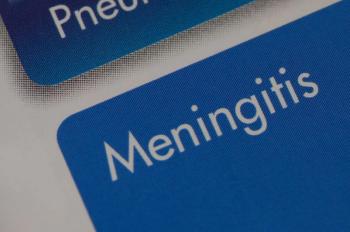
Rise in Off-Label GLP-1 Prescribing Highlights Need for Equitable Access
In association with patients’ race, ethnicity, and social determinants of health, researchers explored the off-label prescribing of GLP-1s approved for type 2 diabetes.
Based on an all-payer US claims-based dataset, significantly high rates of off-label glucagon-like peptide-1 (GLP-1) receptor agonist prescribing were uncovered throughout the year 2022, according to data published in the American Journal of Medicine Open.1 Findings from this review support further approaches to increasing equitable access of these medications, especially in underserved communities.
“Prescriptions for GLP-1 RAs have increased appreciably in the US over the last several years,” wrote authors of the study. “In addition, wide-spread marketing of the weight-loss benefits of these drugs has spurred media attention highlighting differences in use and access between over-resourced and under-resourced populations.”
According to an Axios report, more than 2% of the US population is currently taking GLP-1s for a variety of reasons, resulting in almost a 600% jump in the use of this medication class since 2019.2 Originally approved to treat patient outcomes among those with type 2 diabetes (T2D), GLP-1s have since been approved for weight-loss.1 Since the explosion of their use among patients with T2D or obesity, there are now 7 available GLP-1 options on the US market to treat either condition.3
READ MORE:
However, with an obesity prevalence of over 40% among US adults,4 there is evidence that these medications are being used off-label to improve various obesity-related outcomes. This off-label use is especially apparent because many of the approved GLP-1s do not encompass both T2D and obesity, rather one or the other. Moreover, this off-label prescribing amid increased obesity rates and GLP-1 use has also shown to perpetuate socioeconomic disparities.
“Whether [these disparities exist] in those taking GLP-1 RAs off-label remains to be determined,” they wrote.1 “We sought to examine off-label prescribing of GLP-1 RAs approved for T2D across the US through the lens of race, ethnicity, and social determinants of health.”
To understand off-label GLP-1 prescribing and its associated disparities, researchers conducted a retrospective analysis featuring multiple data sources regarding patients with prescriptions for GLP-1 RAs approved for T2D. The analysis, however, only included data spanning from January 1-December 31, 2022. Sifting through prescription drug data, off-label prescribing was noted if researchers uncovered prescriptions without an ICD-10 code for T2D.
Their main goal was to uncover the association of off-label GLP-1 prescribing with various patient characteristics. Researchers predicted higher-income communities, rather than those that are historically underserved, would exhibit significantly higher rates of off-label prescribing, possibly due to varying financial means to seek these medications.
“The primary aim was to identify correlations between county-level GLP-1 RA off-label prescription rates and health disparity variables (race, ethnicity, median household income, and social vulnerability) within the US,” continued the authors.1 “Our hypothesis was that higher rates of off-label prescribing would be present in counties that had higher percentages of White [and] non-Hispanic residents, higher median household income, and lower social vulnerability.”
The analysis included a total of 3,688,430 GLP-1 prescriptions spanning across 2783 of the 3143 US counties.1,5 GLP-1 prescriptions accounted for 0.15%-0.85% of each county’s population. The median off-label prescription rates per US county was 37.7%, while on-label prescriptions showed a median of 62.3% among included counties.
Finally, for sociodemographic characteristics among counties, residents were 84.6% White, 2.5% Black, 0.7% Asian, 0.3% American Indian or Alaska Native, <0.1% Native Hawaiian or Pacific Islander, 1.5% other races, and 4.6% of 2 or more races. The median household income was $61,286 while the mean social vulnerability index (SVI)—higher numbers translating to higher rates of vulnerability—was 0.51.
Using a hierarchical clustering on principle components method, researchers identified the clusters of counties across the US that exhibited the highest and lowest rates of off-label prescribing. Indeed, the highest rate (51.6%) of off-label GLP-1 prescribing occurred in a cluster of counties in Hawaii with a median income of over $92,000. The lowest off-label prescribing rates occurred in a cluster of counties with American Indian reservations. Those rates were 31.2% among counties with a significantly lower median household income of $52,437.
“Using a national claims-based dataset, we observed a high rate of off-label GLP-1 RA prescriptions in 2022, with notable heterogeneity across US counties and few clear population-level drivers,” the authors wrote.1 “In our analysis, nearly 40% of GLP-1 RA prescriptions were off-label. In another recent study, first time prescriptions for GLP-1 RAs grew from 4% in the first half of 2018 to 24% in the first half of 2023, with off-label prescriptions growing from 9% to 33% over the same time periods.”
Amid increased rates of GLP-1 prescriptions as well as diabetes and obesity prevalence, experts are not expecting off-label prescribing to slow down anytime soon. As these occurrences continue to increase, patients will continue to seek GLP-1 medications for conditions they do not have. And while areas with greater median incomes will be able to access these off-label prescriptions more often than underserved communities, experts believe significant disparities are further being uncovered in the context of equitable GLP-1 access.
“This retrospective analysis of an all-payer US claims-based dataset found high rates of off-label GLP-1 RA prescribing in 2022,” they concluded.1 “These findings could help to inform population health strategies focused on equitable access to GLP-1 RAs.”
READ MORE:
Pharmacy practice is always changing. Stay ahead of the curve: Sign up for our
References
1. Spinelli KJ, Oakes AH, Chiu ST, et al. Health disparity clusters of off label prescriptions for glucagon-like peptide 1 receptor agonists. Am J Med Open. 2025;13:100100. https://doi.org/10.1016/j.ajmo.2025.100100
2. Reed T. Just how many Americans are taking GLP-1s now. Axios. May 27, 2025. Accessed August 21, 2025. https://www.axios.com/2025/05/27/american-glp1-use-weight-loss-increasing
3. GLP-1 agonists. Cleveland Clinic. July 3, 2023. Accessed August 21, 2025. https://my.clevelandclinic.org/health/treatments/13901-glp-1-agonists
4. Emmerich SD, Fryar CD, Stierman B, et al. Obesity and severe obesity prevalence in adults: United States, August 2021–August 2023. NCHS Data Brief, no 508. Hyattsville, MD: National Center for Health Statistics. 2024. doi: https://dx.doi.org/10.15620/cdc/159281
5. O’Connor B. I visited every county in the U.S.—and yes, there’s a club for that. Cornell University. March 28, 2023. Accessed August 21, 2025. https://alumni.cornell.edu/cornellians/every-county/
Newsletter
Pharmacy practice is always changing. Stay ahead of the curve with the Drug Topics newsletter and get the latest drug information, industry trends, and patient care tips.






































































































































